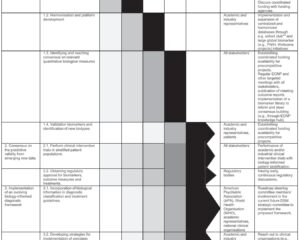Highlight
- A cancer diagnosis is associated with a modest but persistent increase in medical debt in collections, lasting up to six years post-diagnosis.
- Patients with colorectal and bladder cancers experience significant, sustained increases in total debt in collections.
- Despite increased medical debt, overall total debt, bankruptcy rates, and credit scores did not significantly change post-diagnosis in the general cohort.
- High insurance coverage rates in Massachusetts did not fully mitigate the financial burden of cancer.
Study Background and Disease Burden
Cancer affects nearly 40% of individuals in the United States throughout their lifetime and imposes substantial financial strain due to high out-of-pocket expenses, nonmedical costs, and loss of income. This financial toxicity can adversely impact treatment adherence, quality of life, and overall outcomes. While prior studies have documented increased out-of-pocket costs after cancer diagnosis, comprehensive evaluations of objective financial health markers such as medical debt in collections, bankruptcy, and credit scores have been limited. Understanding the longitudinal financial consequences of cancer is critical to inform policy and targeted financial assistance programs, especially given the potential for sustained economic hardship even in states with high insurance coverage like Massachusetts. This context prompted a detailed population-based investigation into the evolution of medical and nonmedical debt following cancer diagnosis.
Study Design
This was a retrospective, population-based cohort study conducted in Massachusetts. Researchers identified 74,146 patients with a first-time diagnosis of one of nine common cancers—bladder, breast, cervical, colorectal, liver, lung, ovarian, thyroid, and uterine—between 2010 and 2019. Each cancer patient was matched 1:1 with a noncancer control individual based on demographic and socioeconomic baseline factors (mean age 57.2 years, 81.2% female) to control for confounding.
The study leveraged comprehensive financial datasets linked longitudinally at 6-month intervals to evaluate outcomes from diagnosis up to 8.5 years. The primary outcomes were changes over time (difference-in-differences design) in:
– Total debt (sum of all open installment trades)
– Total debt in collections
– Medical debt in collections
– Credit scores (VantageScore ranging 300–850)
– Bankruptcy rates
These measures allowed an objective assessment of debt burden and credit health. Breast cancer was the most frequent diagnosis (38.6%), followed by lung (18.6%) and colorectal cancer (14%).
Key Findings
The analysis revealed nuanced, cancer-specific patterns in medical debt and overall debt burden:
– In the overall cancer cohort, medical debt in collections increased modestly by $15.45 at 6 years post-diagnosis compared with matched controls. Among patients who had any medical debt in collections post-diagnosis, the increase was more substantial at $160.01.
– Total debt, total debt in collections, bankruptcy rates, and credit scores did not show significant differences between cancer patients and controls across the total cohort.
Cancer site-specific findings included:
– Colorectal cancer patients experienced a mean increase of $155.55 in total debt in collections at 6 years post-diagnosis.
– Bladder cancer patients saw an even larger increase of $375.77 in total debt in collections at 5.5 years post-diagnosis.
– Medical debt in collections increases varied by cancer type and duration post-diagnosis:
– Breast cancer: $11.02 increase up to 4 years post-diagnosis
– Cervical cancer: $33.91 increase up to 1 year
– Colorectal cancer: $38.99 increase up to 6 years
– Lung cancer: $26.68 increase up to 5.5 years
– Uterine cancer: $9.77 increase up to 1 year
– Remarkably, liver cancer patients showed a statistically significant decrease in total debt by approximately $12,608 at 8.5 years, potentially reflecting distinct survivorship and economic patterns.
– No significant elevation in bankruptcy rates was detected, suggesting that although medical debt increased, it did not translate into higher bankruptcy in this insured population.
These results indicate that while modest increases in medical debt are common following cancer diagnosis, the financial impact is heterogenous by cancer type, with colorectal and bladder cancers linked to more persistent and larger debt burdens.
Expert Commentary
This large-scale, matched cohort study provides important, objective insight into the financial consequences of cancer diagnosis in a state with high insurance coverage. The findings highlight that even insured patients accrue modest but persistent medical debts that may last for years. Notably, the absence of significant changes in total debt, credit score, or bankruptcy suggests that patients may manage some financial risks or delay debt escalation despite increased medical collections.
The substantial debt burden in colorectal and bladder cancer patients may relate to treatment complexity, longer survivorship, or higher co-payments. Liver cancer survivors’ reduced debt warrants further research but may be influenced by more aggressive disease courses and mortality.
Limitations include potential lack of generalizability beyond Massachusetts, residual confounding, and absence of detailed treatment or income data. Additionally, the relatively modest increase in debt might underrepresent financial distress in more vulnerable populations without insurance or with severe disease.
Overall, these findings underscore the need for integrated financial counseling and assistance programs early in the cancer care continuum. They emphasize the importance of policy initiatives that reduce out-of-pocket burden and expand safety nets to prevent chronic medical debt, which has been linked to reduced access to care and adverse health outcomes.
Conclusion
Cancer diagnosis in Massachusetts is associated with sustained increases in medical debt in collections, especially for colorectal and bladder cancers, despite widespread insurance coverage. The absence of significant changes in bankruptcy and credit scores suggests that patients may mitigate extreme financial consequences but remain vulnerable to prolonged debt accumulation.
These findings highlight the critical need to address financial toxicity through preventive financial assistance, cost transparency, and supportive policies tailored to cancer subpopulations at highest risk. Future research should explore mechanisms underlying cancer-specific debt patterns and evaluate interventions to alleviate long-term financial hardship and improve health equity.
References
Uppal N, Gomez-Mayorga JL, O’Donoghue AL, Fleishman A, Bogdanovski AK, Roth EM, Broekhuis JM, Hu-Bianco QL, Esselen KM, James BC. Debt, Bankruptcy, and Credit Scores After Cancer Diagnosis. JAMA Oncol. 2025 Aug 28:e253302. doi:10.1001/jamaoncol.2025.3302. PMID: 40875239; PMCID: PMC12395357.
Additional literature consulted:
– Ramsey SD, Bansal A, Fedorenko CR, et al. Financial Insolvency as a Risk Factor for Early Mortality Among Patients With Cancer. J Clin Oncol. 2016;34(9):980-986.
– Bernard DS, Farr SL, Fang Z, et al. Medical Debt and Its Impact on Health and Healthcare Utilization. J Gen Intern Med. 2023;38(2):350-357.
– Warren JL, Yabroff KR, Meekins A, et al. Evaluation of Trends in Total and Out-of-Pocket Costs Among US Patients With Cancer by Insurance Type, 2008 to 2018. JAMA Netw Open. 2021;4(4):e214035.



